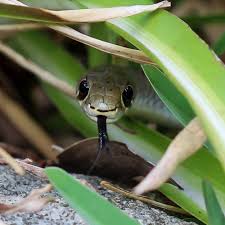Stamp: Fist strangling a snake (Austria 1946)
Fist strangling a snake (Austria 1946)
16 September (Austria ) within release Exhibition against facism goes into circulation Stamp Fist strangling a snake face value 30+30 Austrian groschen
| Stamp Fist strangling a snake in catalogues | |
|---|---|
| Michel: | Mi:AT 780 |
| Yvert et Tellier: | Yt:AT 642 |
Stamp is vertical format.
Also in the issue Exhibition against facism:
- Stamp - Occupation of Austria 1938 face value 5+3;
- Stamp - The End 1945 face value 6+4;
- Stamp - Stephans cathedral burning face value 8+6;
- Stamp - Hand behind barbed wire face value 12+12;
- Stamp - Fist strangling a snake face value 30+30;
- Stamp - Hammer crushing a pillar with swastika capital face value 42+42;
- Stamp - Hand swearing oath & Austrian flag face value 1+1;
- Stamp - Austrian eagle rising from the flames face value 2+2;
- Stamp - Lightnings face value 5+3;
- Stamp - Skull and Hitler mask face value 12+12;
Stamp Fist strangling a snake it reflects the thematic directions:
An exposition, in the most general sense, is an organized presentation and display of a selection of items. In practice, exhibitions usually occur within museums, galleries and exhibition halls, and World's fairs. Exhibitions can include many things such as art in both major museums and smaller galleries, interpretive exhibitions, natural history museums and history museums, and also varieties such as more commercially focused exhibitions and trade fairs.
Reptiles are tetrapod (four-limbed vertebrate) animals in the class Reptilia, comprising today's turtles, crocodilians, snakes, amphisbaenians, lizards, tuatara, and their extinct relatives. The study of these traditional reptile orders, historically combined with that of modern amphibians, is called herpetology. Because some reptiles are more closely related to birds than they are to other reptiles (e.g., crocodiles are more closely related to birds than they are to lizards), the traditional groups of "reptiles" listed above do not together constitute a monophyletic grouping (or clade). For this reason, many modern scientists prefer to consider the birds part of Reptilia as well, thereby making Reptilia a monophyletic class.
Snakes are elongated, limbless reptiles of the suborder Serpentes Like all other squamates, snakes are ectothermic, amniote vertebrates covered in overlapping scales. Many species of snakes have skulls with several more joints than their lizard ancestors, enabling them to swallow prey much larger than their heads (cranial kinesis). To accommodate their narrow bodies, snakes' paired organs (such as kidneys) appear one in front of the other instead of side by side, and most have only one functional lung. Some species retain a pelvic girdle with a pair of vestigial claws on either side of the cloaca. Lizards have independently evolved elongate bodies without limbs or with greatly reduced limbs at least twenty-five times via convergent evolution, leading to many lineages of legless lizards. These resemble snakes, but several common groups of legless lizards have eyelids and external ears, which snakes lack, although this rule is not universal (see Amphisbaenia, Dibamidae, and Pygopodidae).
A hand is a prehensile, multi-fingered organ located at the end of the forearm or forelimb of primates such as humans, chimpanzees, monkeys, and lemurs. A few other vertebrates such as the koala (which has two opposable thumbs on each "hand" and fingerprints remarkably similar to human fingerprints) are often described as having "hands" instead of paws on their front limbs. The raccoon is usually described as having "hands" though opposable thumbs are lacking.
Animals are multicellular, eukaryotic organisms of the kingdom Animalia (also called Metazoa). All animals are motile, meaning they can move spontaneously and independently, at some point in their lives. Their body plan eventually becomes fixed as they develop, although some undergo a process of metamorphosis later on in their lives. All animals are heterotrophs: they must ingest other organisms or their products for sustenance.





